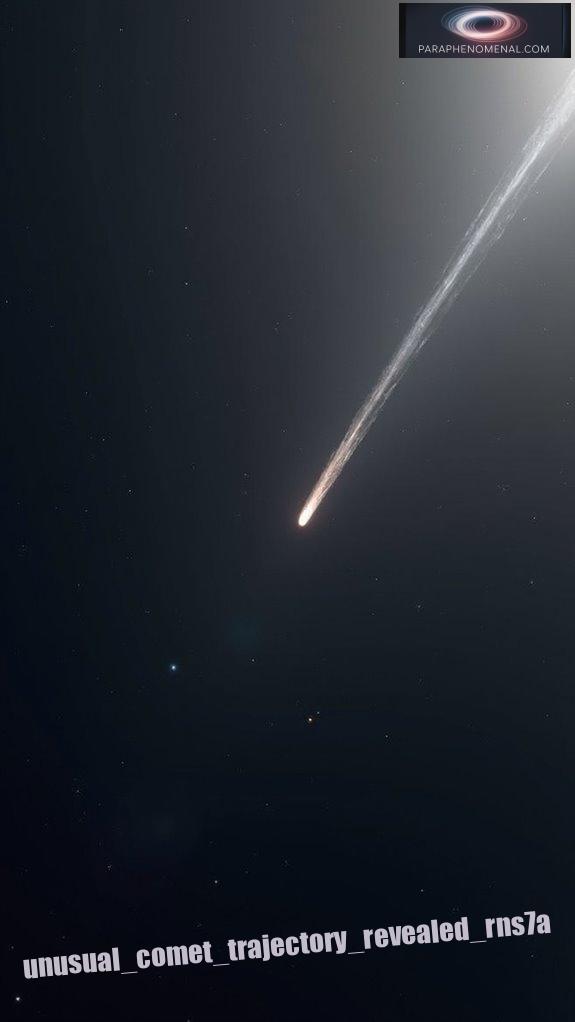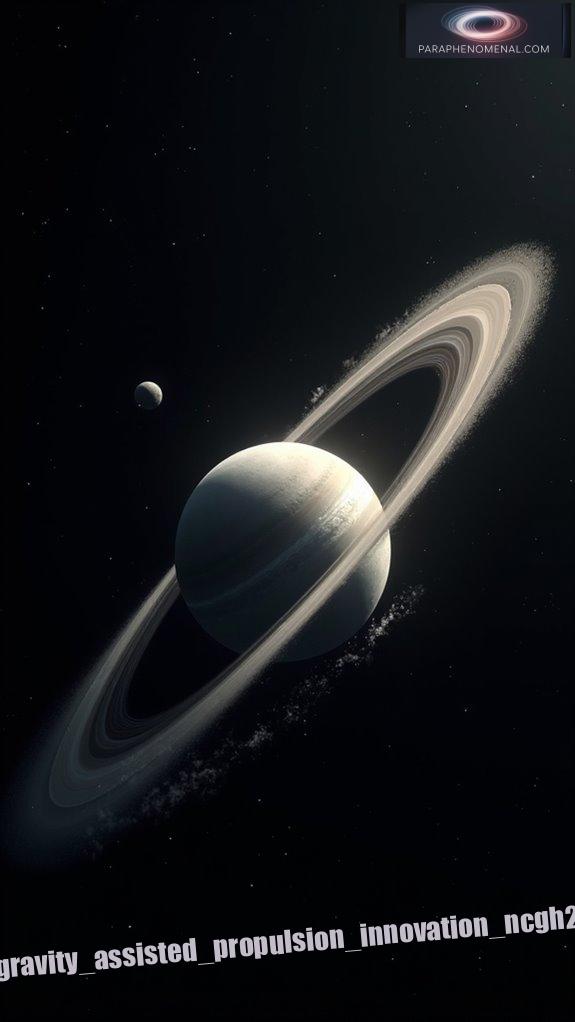Could the odd comet 3I/ATLAS actually be a sign of alien technology?
I find its hyperbolic path and strange brightness fascinating.
It’s not following a typical orbit around the Sun. Its peculiar acceleration raises questions that standard science struggles to answer.
Is it possible that what we see isn’t just a natural phenomenon, but perhaps the result of extraterrestrial influence?
At ParaPhenomenal, I dive deep into these thrilling theories to unveil what 3I/ATLAS might reveal about our universe’s puzzles.
I urge you to keep an open mind as we explore this cosmic mystery together.
My Close Encounter with the Unknown: Did I Spot a UFO?
A few years ago, I attended a stargazing event that left me in awe. As I gazed up at the night sky, I saw a bright object darting across the stars at an incredible speed.
Could it have been a military aircraft, or perhaps a satellite? The way it changed direction so rapidly felt otherworldly.
Naturally, the experience spurred my fascination with UFOs and phenomena like 3I/ATLAS. Ever since, I’ve marveled at how the universe can churn out mysteries that challenge our understanding—from comets to unidentified flying objects.
Quick Takeaways
- 3I/ATLAS displays unusual acceleration that standard orbital mechanics cannot explain, hinting at potential artificial propulsion sources.
- The comet’s brightness patterns and rapid variances suggest distinct surface characteristics or external influences, supporting theories of advanced technology.
- Avi Loeb’s hypothesis suggests interpreting anomalies of 3I/ATLAS as indicators of extraterrestrial engineering rather than natural phenomena.
- The scientific community primarily favors natural astrophysical explanations, raising skepticism towards claims of alien technology associated with 3I/ATLAS.
- Discussions around the comet’s origin fuel public interest, but the media often sensationalizes these theories, creating potential misconceptions.
Unusual Trajectory and Orbital Characteristics of 3I/ATLAS

The unusual trajectory and orbital characteristics of 3I/ATLAS make it a remarkable object in our solar system.
Traveling at an incredible 137,000 miles per hour, this hyperbolic comet shows no signs of being gravitationally bound to the Sun. With its interstellar origin, you can see how it stands apart from other comets.
What’s more, you’ll notice its unconventional acceleration, which can’t be fully explained by standard orbital mechanics. This strange motion raises questions about possible artificial propulsion or unknown natural forces acting on it. As the third known interstellar visitor, 3I/ATLAS expands our understanding of celestial bodies, especially considering that it emits radiative emissions including harmful chemicals during its orbit. Recent studies have suggested that this comet may exhibit signs of extraterrestrial influence, which adds to the intrigue surrounding its atypical behavior.
At ParaPhenomenal, we explore these mysteries, inviting you to investigate deeper into the universe’s wonders.
Observational Anomalies: Changes in Brightness and Glow Direction
How does 3I/ATLAS manage to exhibit such surprising changes in brightness and glow direction?
Its brightness patterns are unlike those seen in typical comets. As 3I/ATLAS approached the Sun, it brightened rapidly, released gas and dust, and created a coma that showed unexpected intensity and asymmetry. This variance in glow dynamics might suggest something unusual about its surface or even external influences at play. Traditional models that explain comet behavior struggle to account for this anomaly. Additionally, the rapid brightening observed remains unexplained, leading scientists to investigate potential differences in chemical composition and sublimation processes. Moreover, the peculiar orbit of 3I/ATLAS could imply potential unusual phenomena affecting its trajectory.
You might wonder if the comet’s unique composition or surface activity led to these changes. Our platform, ParaPhenomenal, aims to explore such mysteries, inviting you to contemplate the implications of these extraordinary observations. Understanding these phenomena could reveal secrets beyond our world.
Gravity-Assisted Maneuvering: Implications for Propulsion Methods

Revealing the secrets of gravity-assisted maneuvering can reshape our understanding of space travel. By using a planet’s gravity, spacecraft can dramatically alter their velocity without burning onboard propellant. This propulsion innovation allows you to “steal” energy from a planet, gaining speed as you fly by, which reduces the need for costly fuel. Gravity assists achieve increased speed without fuel expenditure, optimizing the overall mission costs and spacecraft design. In fact, Comet 3I Atlas recently demonstrated this concept as it passed through the inner solar system, showcasing how celestial bodies can influence the trajectories of spacecraft.
The benefits of gravity assists are immense. Missions that venture beyond Mars benefit immensely, as they can achieve speeds unattainable with traditional propulsion methods.
However, launching at the right time and angle is essential for success. This complexity doesn’t deter pioneers seeking adventure in the cosmos.
At ParaPhenomenal, we explore these profound mysteries, inviting you to embrace the limitless potential of space exploration and its implications.
The Dark Forest Hypothesis: Understanding Extraterrestrial Intentions
Understanding the intentions of extraterrestrial civilizations raises profound questions about survival and communication in the vastness of space. The Dark Forest Hypothesis suggests that civilizations remain silent, fearing that revealing their existence could lead to annihilation. This raises concerns about cosmic survival, where signaling could provoke preemptive strikes. Advanced civilizations may choose silence to avoid detectable marks that could attract unwanted attention.
| Concept | Explanation | Implications |
|---|---|---|
| Dark Forest | Universe as hostile and competitive | Fear leads to silence |
| Extraterrestrial Intentions | Unknown and unpredictable | Risk of misjudging threats |
| Signaling Risk | Broadcasting can attract danger | Potential for humanity’s destruction |
| Mutual Assured Destruction | Civilizations act defensively | Silence seen as survival strategy |
| Fermi Paradox | Why we haven’t detected intelligent life | Fear perpetuates loneliness in space |
This chilling framework suggests we tread carefully in the pursuit of contact.
Community Perspectives: Reaction to Loeb’s Theory and Future Research Directions

As the debate over Loeb’s theory unfolds, reactions from the scientific community, media, and public have been far from uniform.
Mainstream astronomers largely reject the alien technology idea for 3I/ATLAS, emphasizing that anomalies can often be explained by natural astrophysical processes. Academic debates center on the need for extraordinary evidence for such claims, which hasn’t yet materialized.
Media coverage has sparked public fascination, but sensational headlines often lead to misconceptions about scientific consensus.
Discussions on social platforms reveal a split, with some excitedly sharing theories while others mock them.
Looking ahead, initiatives like the Galileo Project drive more rigorous research. Avi Loeb’s vision for the future of astronomy emphasizes the importance of innovative approaches to study unexplained phenomena.
Improved observational techniques and collaborative data-sharing may finally clarify the mysteries surrounding interstellar objects, aligning with our mission at ParaPhenomenal to explore the extraordinary.
FAQ
What Is the Origin of the Name 3i/Atlas?
You might think naming cosmic objects is trivial, but “3I/ATLAS” signifies the third interstellar visitor, merging cultural implications of discovery and exploration with the characters of the survey that revealed it. It’s cosmic symbolism!
How Does 3i/Atlas Compare to Other Interstellar Objects?
3I/ATLAS stands out in interstellar comparisons due to its unique characteristics, like a high eccentricity of 6.137 and an impressive velocity of about 58 km/s, distinguishing it from earlier interstellar objects you’ve learned about.
What Are the Potential Risks of 3i/Atlas?
Analyzing risks of 3I/ATLAS uncovers potential hazards, juxtaposing stunning cosmic phenomena with unsettling technological implications. You must consider its unusual behavior, unknown propulsion, and unpredictable trajectory, impacting Earth’s safety and scientific understanding of cosmic objects.
Has 3i/Atlas Been Observed by Any Space Missions?
Yes, 3I/ATLAS has been observed by various space missions, including Hubble and James Webb. These extraterrestrial observations provide unique perspectives into its composition and trajectory, enhancing our understanding of this interstellar visitor’s journey through our solar system.
What Future Research Is Planned on 3i/Atlas?
What future discoveries might await you in the depths of space? As 3I/ATLAS reemerges, you’ll witness groundbreaking research with significant scientific implications, revealing the mysteries of comets and interstellar origins that ignite your sense of freedom.
References
- https://lweb.cfa.harvard.edu/~loeb/HCL25.pdf
- https://www.livenowfox.com/news/3i-atlas-comet-interstellar-updates-latest-avi-loeb-nickel
- https://www.eldiario24.com/en/spacecraft-race-toward-strange-object/23904/
- https://science.nasa.gov/solar-system/comets/3i-atlas/
- https://www.youtube.com/watch?v=G2ZvU0sLG5A
- https://skyandtelescope.org/astronomy-blogs/explore-night-bob-king/all-eyes-on-interstellar-comet-3i-atlas/
- https://www.space.com/astronomy/comets/interstellar-invader-comet-3i-atlas-is-still-full-of-surprises-an-unexpected-brightening-has-scientists-baffled
- https://www.livescience.com/space/comets/nasa-spacecraft-reveal-interstellar-comet-3i-atlas-brightened-rapidly-as-it-swooped-behind-the-sun
- https://arxiv.org/abs/2510.25035
- https://simpleflying.com/how-nasa-spacecraft-use-gravity-assist-manage-velocity-change-trajectory/
- https://en.wikipedia.org/wiki/Gravity_assist
- https://www.universetoday.com/articles/the-future-of-propellantless-space-travel
- https://phys.libretexts.org/Courses/Prince_Georges_Community_College/General_Physics_I:_Classical_Mechanics/58:_Astrodynamics/58.05:_Gravity_Assist_Maneuvers
- https://arc.aiaa.org/doi/10.2514/6.2024-0633
- https://science.nasa.gov/learn/basics-of-space-flight/primer/
- https://higgs.ph.ed.ac.uk/outreach/higgshalloween-2021/fermi-paradox
- https://www.universetoday.com/articles/beyond-fermis-paradox-xvi-what-is-the-dark-forest-hypothesis
- https://www.youtube.com/watch?v=AoST-KczR5Q
- https://www.iflscience.com/the-unsettling-explanation-of-the-dark-forest-hypothesis-why-aliens-havent-made-contact-69841
- https://www.youtube.com/watch?v=d-1tdGEP2XU
- https://www.youtube.com/watch?v=dma7QqAhutI
- https://www.euronews.com/next/2025/10/29/everything-we-know-about-3iatlas-the-mysterious-object-speeding-through-our-solar-system
- https://news.northeastern.edu/2025/09/08/3i-atlas-comet-interstellar-traveler/
- https://www.youtube.com/watch?v=W9p_TBzxFBs&vl=en
- https://distritoglobal.org/3i-atlas-cosmic-visitor-discovery-shocks-nasa-astronomers/
- https://en.wikipedia.org/wiki/3I/ATLAS
- https://www.livescience.com/space/extraterrestrial-life/here-we-go-again-controversial-paper-questions-whether-interstellar-visitor-3i-atlas-is-possibly-hostile-alien-tech-in-disguise
- https://thespacestore.com/blogs/blog/why-the-controversy-around-3i-atlas-theories-are-good-for-astronomy
- https://www.space.com/astronomy/comets/interstellar-comet-3i-atlas-could-help-protect-earth-from-dangerous-asteroids-heres-how
- https://economictimes.com/news/international/us/3i/atlas-a-threat-to-humanity-why-astronomers-and-planetary-defense-teams-is-tracking-the-rare-black-swan-interstellar-object-that-could-harbor-alien-technology/articleshow/124758806.cms
